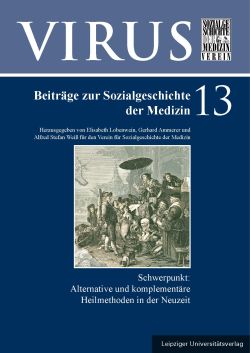
VIRUS Band 13, pp. 115-132, 2020/07/23
Schwerpunkt: Alternative und komplementäre Heilmethoden in der Neuzeit

Since ancient times, a healthy diet was seen as the basis of a long life. Opinions on what constituted a healthy diet differed. The years around 1900 were characterised by anxiety and a desire for a healthier life style outside the cities. During this time, many private and a few public sanatoria for the neurotic as well as for the consumptive opened their doors for the first time. In the country houses, healthy meals stood at the center of a wholesome regimen. Both physicians and lay-managers of these sanatoria made “correct nutrition” to the fundamental part of the cure. Some healers referred to the new sciences (physiology, biology and chemistry), while other entrepreneurs made more use of their own life experience or their (religious) philosophy and the idea of a “natural” medicine as an argument. Sanatoriums often created their ownspecial dishes for their guests. Examples are the “Birchermüesli” (Dr. Bircher-Benner) inZurich or the “Cornflakes” (Dr. Kellogg) in Battle Creek, USA. Special industries now produced healthy food to sell all over the world. To help patients to continue the cure at home by preparing the sanatoria’s dishes, some (mainly female) cooks published their recipes. Many cookery books were highly published and made the sanatoria well known. In this article we will study some of these cookery books.
Keywords: Cookery books, diet, sanatorium, alternative medicine, health industry, fin de siècle